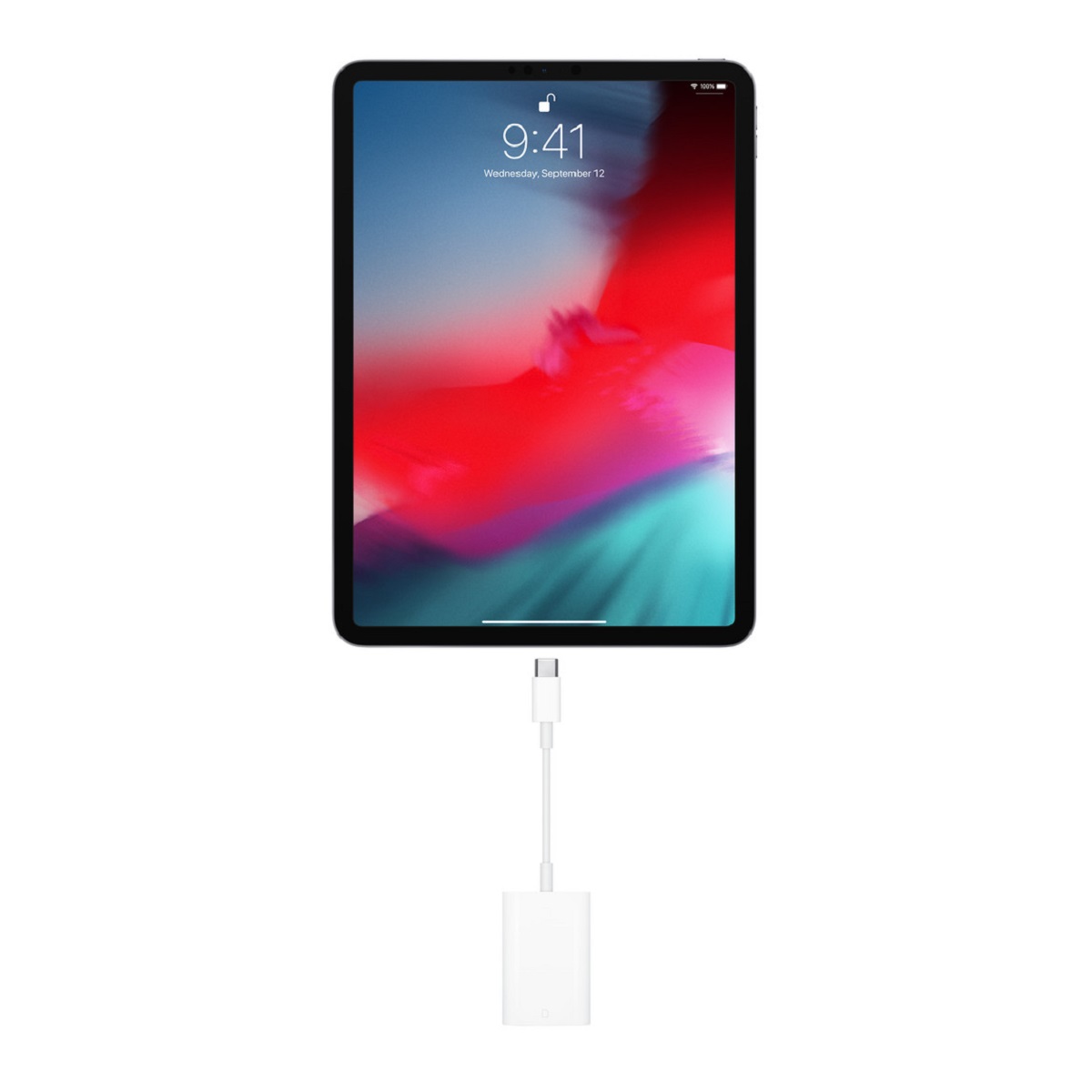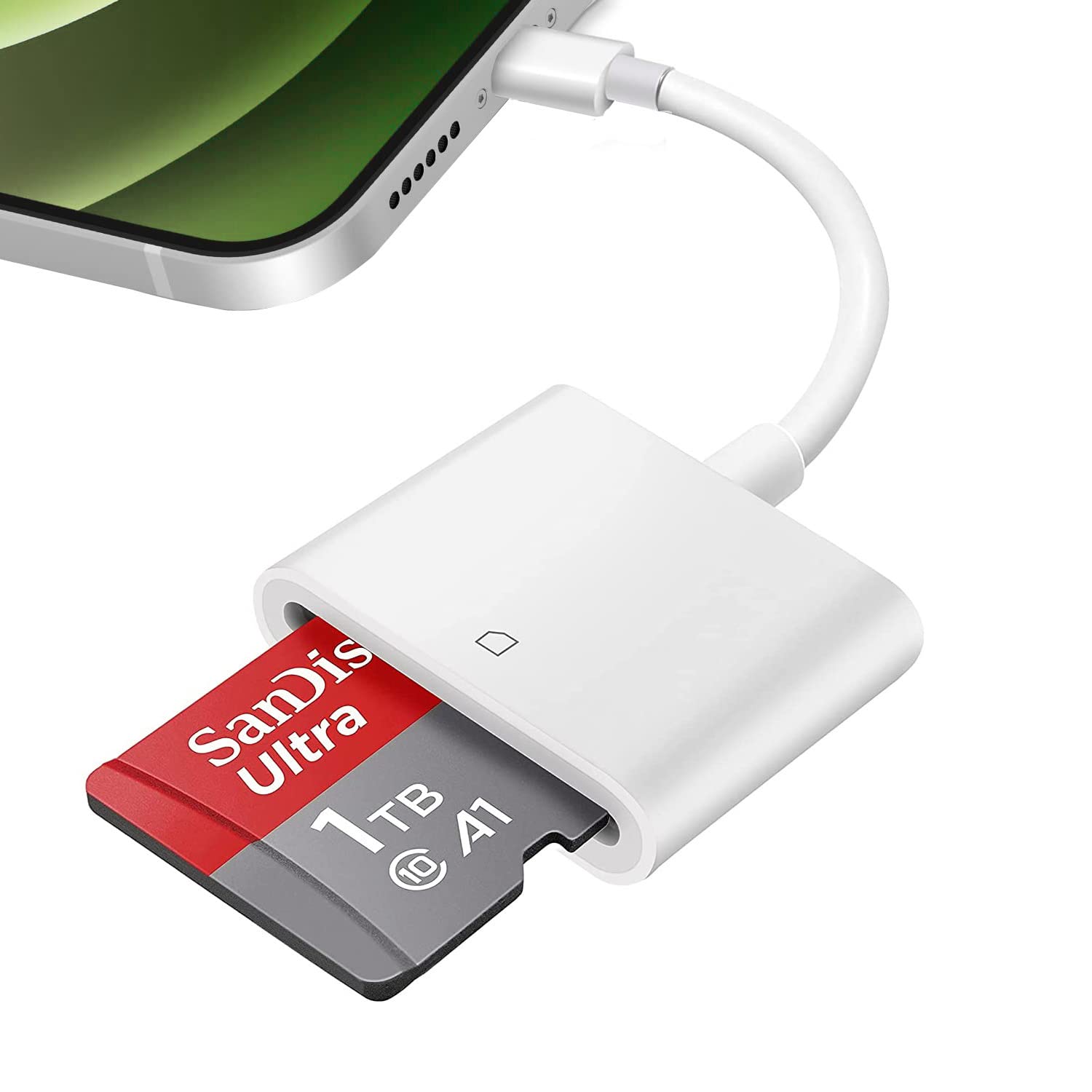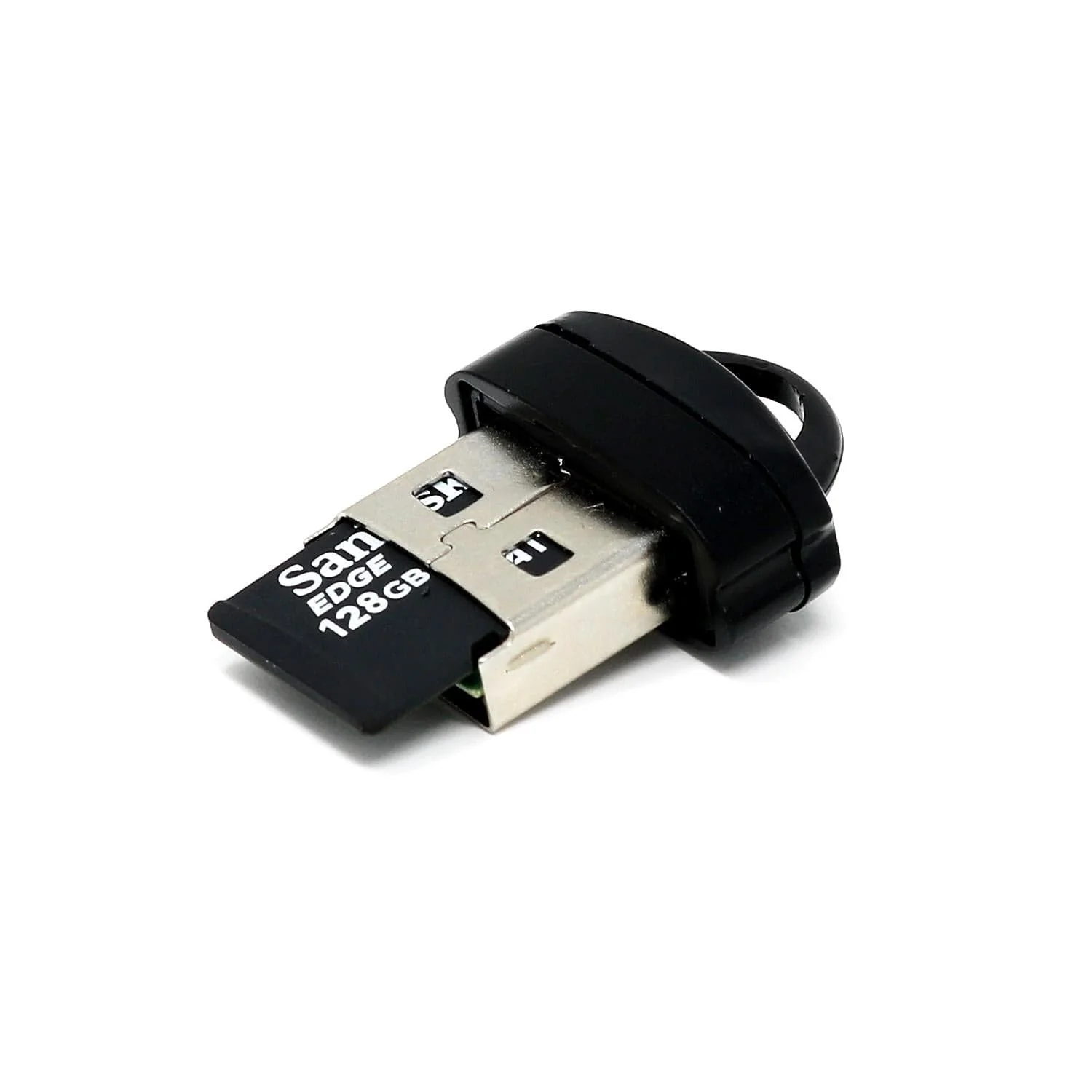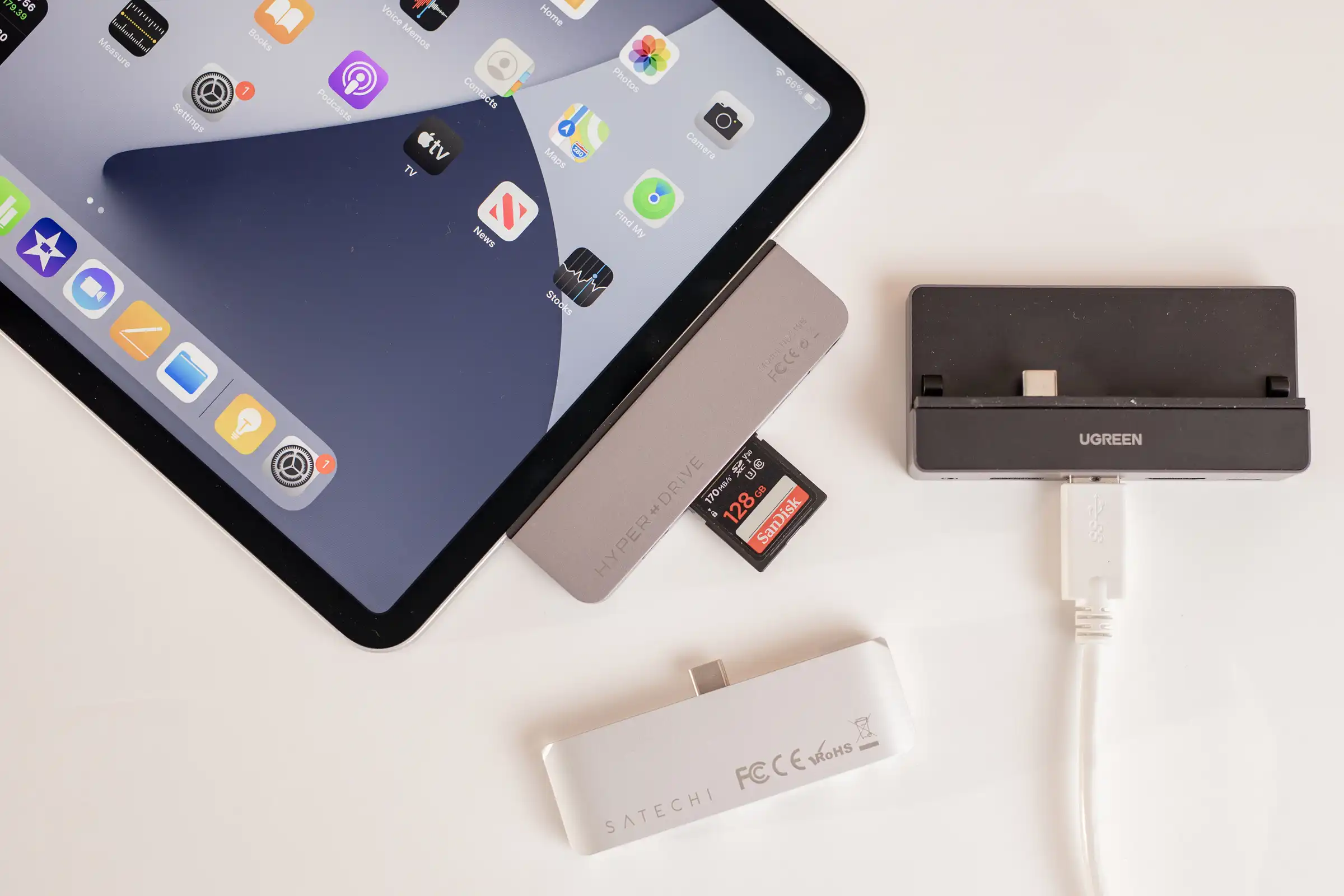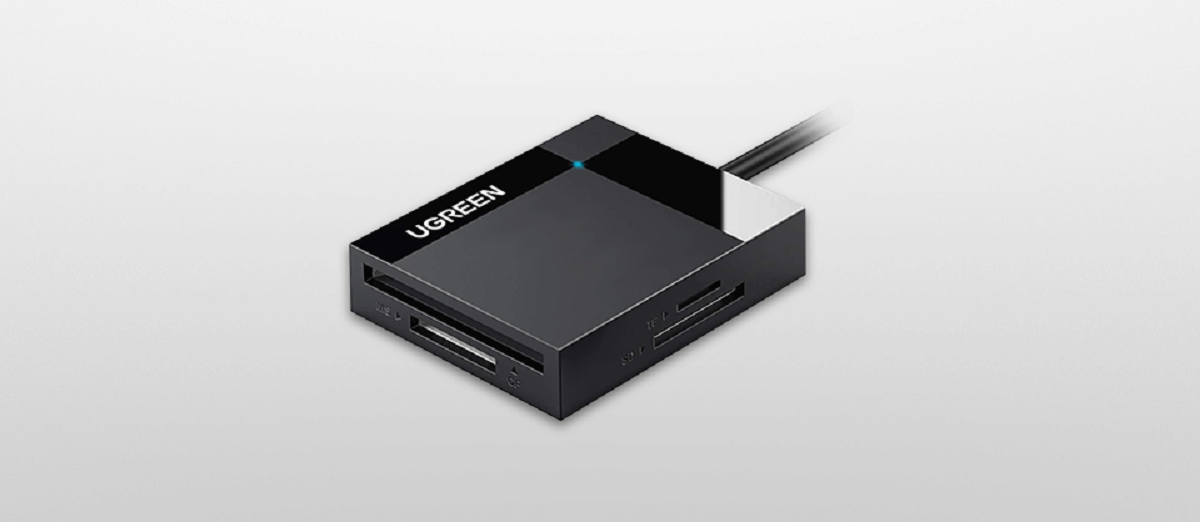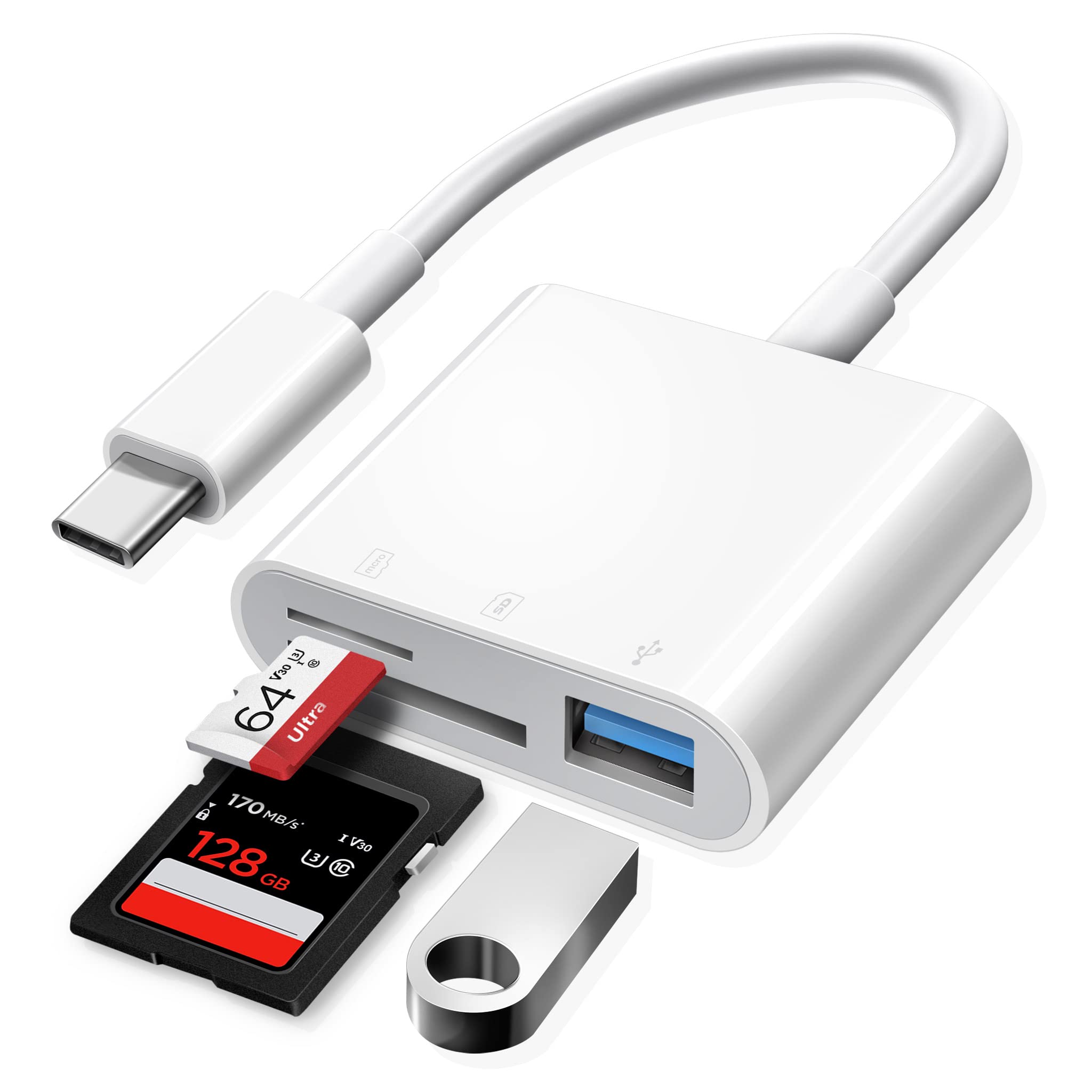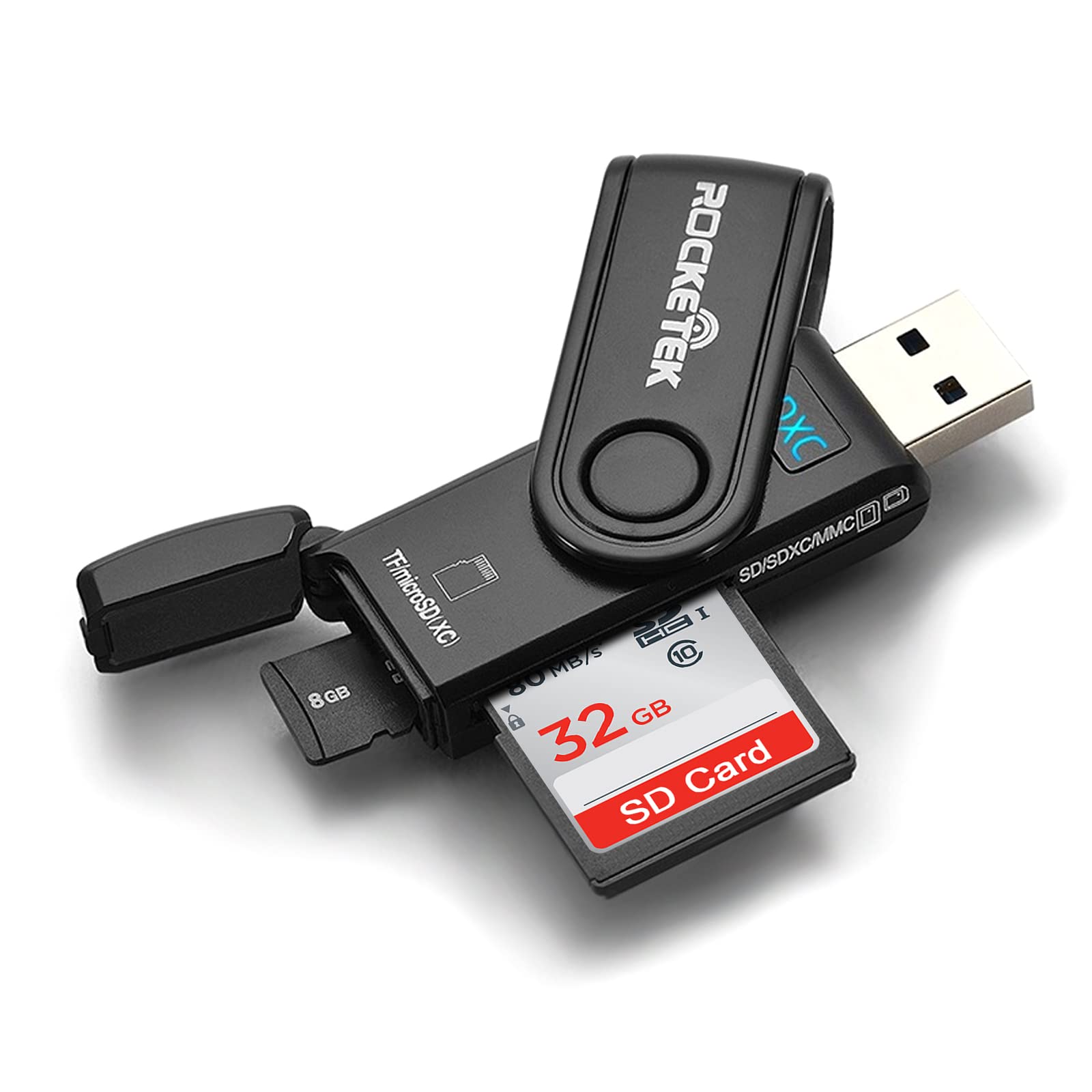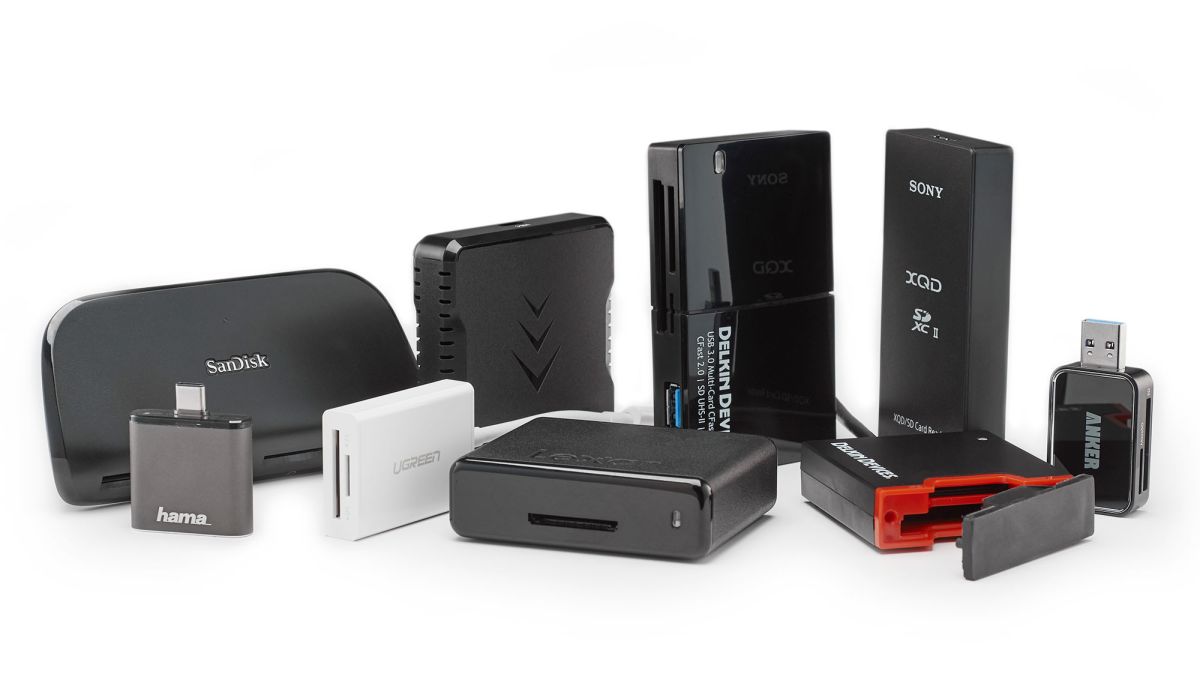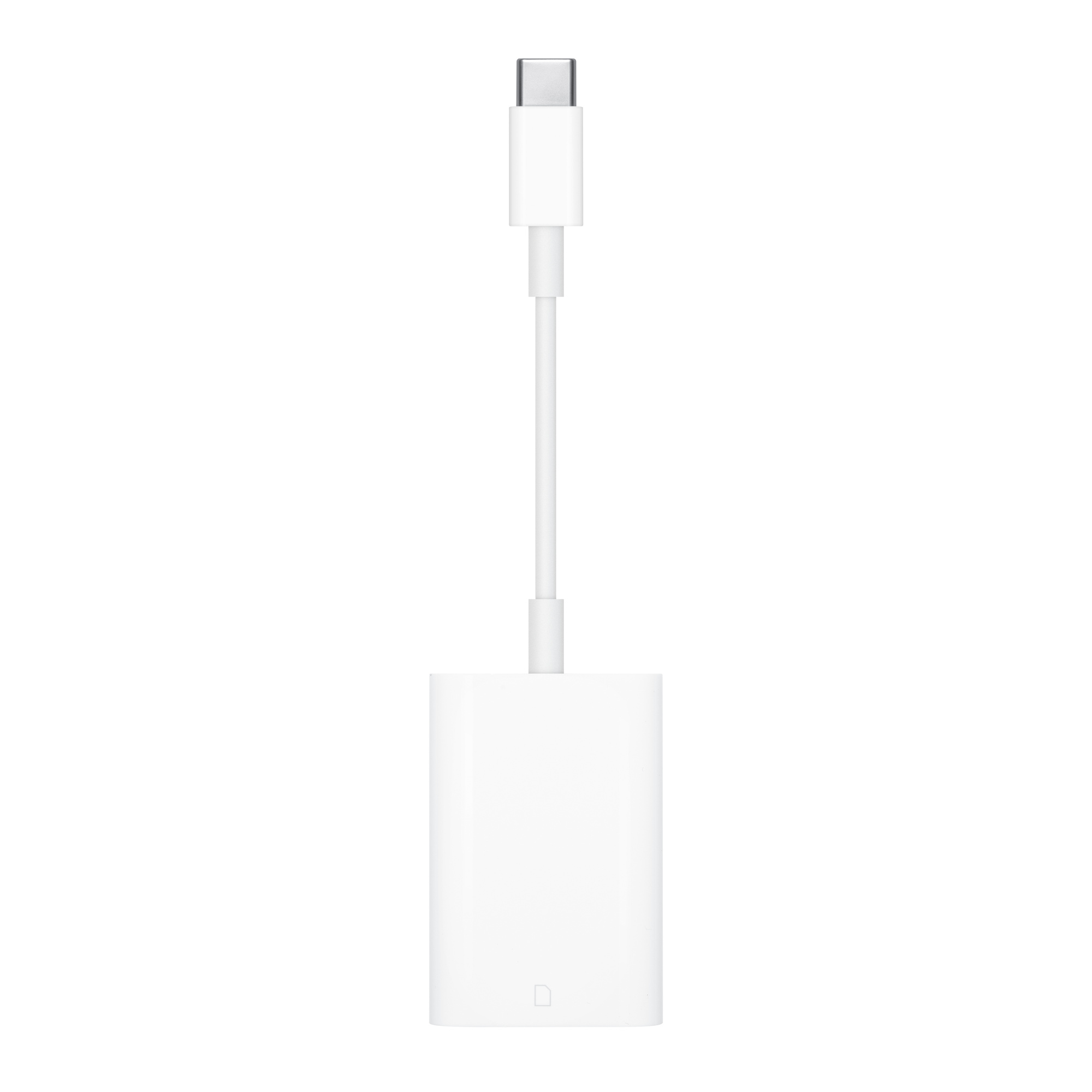Introduction
Welcome to the world of portable storage and convenience! With the advent of technology, our devices have become more versatile and capable of handling various tasks. One such capability is the ability to read SD cards on an iPad. This opens up a world of possibilities for photographers, videographers, and anyone who needs the flexibility of accessing files from an external source.
Whether you want to transfer photos from your camera to your iPad, view documents stored on an SD card, or simply expand your storage capacity, being able to read an SD card on your iPad can be a game-changer. It allows you to unleash the full potential of your device and adds a level of flexibility that was previously limited.
However, not all iPads support the use of an SD card reader. Before diving into the specifics of connecting and using an SD card reader, let’s first determine if your iPad has this capability.
Please note that the steps and instructions provided may vary slightly depending on the model and iOS version of your iPad. It is always a good idea to refer to the user manual or Apple’s official website for the most up-to-date information.
How to Check if Your iPad Supports SD Card Reader
Before attempting to connect an SD card reader to your iPad, it is crucial to ensure that your device supports this functionality. Here are a few steps to verify if your iPad is compatible with an SD card reader:
- Check the iPad model: Apple has released various iPad models over the years, and not all of them have the built-in capability to read SD cards. To determine the model of your iPad, go to the “Settings” app, tap on “General,” and then select “About.” Look for the “Model” information, which will start with the letter “A” followed by a four-digit code. Make a note of this code as it will help in determining the compatibility.
- Verify iPad compatibility: Once you have the model code, you can refer to Apple’s official website or do a quick internet search to find out if your specific iPad model supports the use of an SD card reader. Apple will provide a list of supported iPad models, so ensure that your iPad is included in this list before proceeding further.
- Check the iOS version: In addition to the iPad model, the iOS version plays a role in determining SD card reader compatibility. To check your iOS version, go to the “Settings” app, tap on “General,” and then select “Software Update.” Check if there are any available updates and install them if necessary. It is important to have the latest iOS version to ensure compatibility with accessories like SD card readers.
- Seek professional advice: If you are still unsure about whether your iPad supports the use of an SD card reader, it is always a good idea to consult with an Apple expert or visit an authorized Apple store. They will be able to provide accurate information and guidance based on the specific model and iOS version of your iPad.
Make sure to follow these steps to verify the compatibility of your iPad before purchasing an SD card reader. This will save you time, effort, and frustration when attempting to connect and use the SD card reader with your iPad.
Step-by-Step Guide on How to Connect the SD Card Reader to Your iPad
Once you have confirmed that your iPad supports the use of an SD card reader, it’s time to connect the device and start exploring the possibilities. Here’s a step-by-step guide on how to connect the SD card reader to your iPad:
- Obtain the SD card reader: Purchase a compatible SD card reader for your iPad. You can find these accessories at electronics stores, online retailers, or Apple’s official website. Ensure that you choose a reputable brand and check for compatibility with your specific iPad model and iOS version.
- Power off your iPad: Before connecting any external device to your iPad, it is a good practice to power it off. Press and hold the power button until the “Slide to power off” option appears on the screen. Slide the power off button to shut down your iPad.
- Connect the SD card reader: Once your iPad is powered off, locate the Lightning port or USB-C port (depending on your iPad model) at the bottom or side of your device. Insert the SD card reader into the corresponding port gently but firmly. Ensure that it is connected securely to avoid any connection issues.
- Power on your iPad: After connecting the SD card reader, press and hold the power button again until the Apple logo appears on the screen. This will power on your iPad and initiate the detection process for the SD card reader.
- Open the Files app: Once your iPad has started up, locate the “Files” app on your home screen and tap on it to open it. The Files app is a built-in file management tool designed by Apple, and it is where you can access the files stored on your iPad and external devices like the SD card.
- Access the SD card: Within the Files app, you should see a sidebar with different categories. Look for the section labeled “Locations” and tap on “On My iPad” or “On My iPad and Cloud Providers.” This will open the local storage of your iPad.
- View the SD card: If the SD card is detected and connected properly, it should appear under the “Devices” section in the Files app. Tap on the SD card’s name or icon to access its contents.
- Explore and manage files: You can now browse through the files and folders stored on the SD card. Depending on the file types and applications installed on your iPad, you can open, edit, copy, move, or delete files as needed. The Files app provides a user-friendly interface for managing files from the SD card.
By following these steps, you can successfully connect the SD card reader to your iPad and start utilizing the external storage capabilities of your device. Enjoy the convenience of accessing and managing files directly from the SD card on your iPad!
How to Import Photos or Videos from the SD Card to Your iPad
One of the primary reasons for connecting an SD card reader to your iPad is to import photos or videos from the SD card directly to your device. Here’s a step-by-step guide on how to accomplish this:
- Connect the SD card reader: Follow the steps outlined in the previous section to connect the SD card reader to your iPad securely.
- Open the Photos app: Once the SD card is connected and detected by your iPad, locate the Photos app on your home screen and tap on it to open it. The Photos app is the default application for managing and organizing your photos and videos on your iPad.
- Import media: Within the Photos app, you should see a tab labeled “Import” at the bottom of the screen. Tap on this tab to access the import options.
- Select the SD card: On the import screen, you should see a list of available sources for importing media. Look for the section labeled “Import From” and tap on the name of your SD card.
- Choose media to import: Once you have selected the SD card, you should see a preview of the media files stored on the card. You can now choose the specific photos or videos that you want to import to your iPad. Tap on the files you wish to import to select them. If you want to import all files, tap on “Import All” instead.
- Review and confirm import: After selecting the files, you will be presented with a preview of the selected media. Take a moment to review the files to ensure that you have chosen the correct ones. If you are satisfied, tap on “Import” to start the import process.
- Wait for the import to complete: Depending on the number and size of the files being imported, it may take a few moments for the import process to complete. You will see a progress bar indicating the status of the import. Ensure that you do not disconnect the SD card reader or interrupt the process while it is in progress.
- Access imported media: Once the import is complete, the photos and videos will be available in the “Photos” tab of the Photos app. You can now view, organize, and edit the imported media as you would with any other photos or videos on your iPad.
Follow these steps to easily import photos or videos from the SD card to your iPad, allowing you to access and enjoy your media on a larger, more portable screen. Take advantage of the iPad’s powerful editing tools to enhance your photos and share your favorite memories with friends and family.
Troubleshooting Common Issues When Reading an SD Card on Your iPad
While connecting and using an SD card reader on your iPad is generally a straightforward process, there may be instances where you encounter some issues. Here are some common problems you might face when reading an SD card on your iPad and how to troubleshoot them:
- SD card not detected:
- Ensure that the SD card is properly inserted into the SD card reader and that the reader is securely connected to your iPad.
- Try using a different USB port (if applicable) or cleaning the Lightning or USB-C port on your iPad in case of a faulty connection.
- Consider testing the SD card reader on another device to determine if it is functioning correctly.
- Restart your iPad to refresh its system and retry the connection.
- Slow or interrupted transfer:
- Ensure that both your iPad and the SD card have sufficient battery power to complete the transfer.
- Close unnecessary background apps on your iPad to free up system resources.
- Try using a different SD card reader or a different port on your iPad to see if the issue persists.
- If possible, transfer files in smaller batches rather than all at once to avoid overwhelming the system.
- Incompatible file formats:
- Check if the file formats on the SD card are supported by the apps installed on your iPad. Some apps may have limitations on the types of files they can handle.
- Consider converting unsupported files to a compatible format using third-party software or apps before attempting to transfer them to your iPad.
- File corruption or errors:
- Try using a different SD card reader or connecting the SD card to a computer to check if the files are accessible and not corrupted.
- If possible, make a backup of the files on your SD card before attempting any repairs or recovery.
- Consider using file recovery software or professional data recovery services if the files are important and cannot be accessed through regular means.
- Insufficient storage on your iPad:
- Check the available storage on your iPad and make sure it has enough space to accommodate the files being transferred.
- Consider freeing up storage space by deleting unnecessary files or apps, or transferring existing files to an external storage device.
If you continue to experience issues when reading an SD card on your iPad, it may be beneficial to seek assistance from Apple support or visit an authorized service center. They can provide specialized guidance or check for any hardware or software-related problems that may be causing the issues.
Tips for Organizing and Managing Files from the SD Card on Your iPad
Having the ability to read an SD card on your iPad not only gives you access to external storage but also opens up opportunities for organizing and managing your files more efficiently. Here are some helpful tips to make the most out of this functionality:
- Create folders: Take advantage of the file management capabilities on your iPad by creating folders to organize your files. Within the Files app, you can easily create new folders and subfolders to categorize your photos, videos, documents, or any other files stored on the SD card.
- Use descriptive filenames: When importing files from the SD card to your iPad, consider renaming them with descriptive filenames. This will make it easier to search for specific files and quickly identify their content without having to open them individually.
- Tag files for easy retrieval: Utilize the tagging feature available in the Files app to tag your files with relevant keywords or labels. This can help streamline your search process and facilitate quick retrieval of files based on specific criteria or topics.
- Delete unnecessary files: Regularly review and delete any unnecessary files from your SD card to avoid clutter and optimize your storage space. The Files app allows you to easily select and delete files or entire folders, making the cleanup process a breeze.
- Backup your files: Consider creating backups of your important files stored on the SD card. You can utilize cloud storage services like iCloud or third-party backup solutions to ensure that your files are safely stored in case of any unforeseen issues with the SD card.
- Use file management apps: Explore and install third-party file management apps from the App Store that offer advanced features for organizing and managing your files. These apps can provide additional functionalities like file encryption, synchronization across devices, and compatibility with various file formats.
- Automate file organization: Take advantage of automation features available on your iPad, such as Siri Shortcuts, to automate file organization tasks. You can create custom shortcuts to perform repetitive file management actions, such as moving files from the SD card to specific folders, with just a few taps.
- Regularly update your iPad and apps: Stay up to date with the latest iOS version and app updates on your iPad. These updates often include bug fixes, performance improvements, and new features that can enhance the file management experience when using an SD card reader.
By implementing these tips, you can maintain a well-organized and efficient file management system when working with files from the SD card on your iPad. Enjoy the convenience of having your files accessible and organized whenever you need them!
Frequently Asked Questions about Reading SD Cards on iPad
As the ability to read SD cards on iPads becomes more common, it’s natural to have questions about the process and functionality. Here are answers to some frequently asked questions to help clear up any confusion:
Q: How do I know if my iPad has an SD card reader?
A: Not all iPad models have built-in SD card readers. You can check the compatibility of your iPad by referring to the Apple website or doing a quick internet search to find a list of supported models.
Q: Can I import photos and videos from the SD card to my iPad’s Photos app?
A: Yes, you can easily import photos and videos from the SD card to the Photos app on your iPad. Just connect the SD card reader, open the Photos app, and follow the import process described earlier in this article.
Q: Can I edit files directly from the SD card on my iPad?
A: Yes, you can edit files from the SD card using compatible apps on your iPad. After connecting the SD card reader, access the files through the Files app or the app associated with the specific file type you wish to edit.
Q: Can I transfer files other than photos and videos from the SD card to my iPad?
A: Yes, you can transfer a variety of file types, including documents, audio files, and more, from the SD card to your iPad. Use the Files app to access and manage these files.
Q: Is there a limit to the size of the SD card I can use with my iPad?
A: The size of the SD card is typically limited by the iPad model and iOS version. Older models may have limitations on the maximum capacity supported, so it is advisable to check the specifications of your specific iPad model.
Q: Can I connect multiple SD cards to my iPad at the same time?
A: Unfortunately, most iPads do not support multiple SD card connections simultaneously. You can only connect and access one SD card at a time using the SD card reader.
Q: Do I need an internet connection to read an SD card on my iPad?
A: No, you do not need an internet connection to read an SD card on your iPad. The SD card reader allows you to access and manage files stored on the SD card directly from your iPad’s local storage.
Q: Can I use an SD card reader with my iPad’s case or cover?
A: The compatibility of an SD card reader with your iPad’s case or cover may vary depending on the specific design and thickness of the case. It is recommended to remove the case or cover when connecting the SD card reader to avoid any connectivity issues or obstruction.
Q: Can I transfer files from my iPad to the SD card?
A: Most SD card readers for iPads are designed for importing files from the SD card to the iPad. However, there are some third-party apps available on the App Store that allow you to transfer files from your iPad to an external SD card.
If you have any other questions or concerns about reading an SD card on your iPad, it is recommended to refer to the user manual of your specific iPad model or consult with Apple support for further assistance.
Conclusion
Being able to read an SD card on your iPad brings a new level of convenience and flexibility to your device. Whether you’re a photographer, videographer, or simply someone who needs extra storage space, having the ability to access files directly from an external source can greatly enhance your iPad experience.
In this article, we discussed the process of connecting an SD card reader to your iPad and provided step-by-step instructions on how to import photos and videos from the SD card to your device. We also covered troubleshooting tips for common issues that may arise when reading an SD card on your iPad.
Additionally, we shared tips for organizing and managing files from the SD card on your iPad, such as creating folders, using descriptive filenames, and taking advantage of file management apps. These practices can help you stay organized and efficient when working with files from the SD card.
Lastly, we addressed frequently asked questions about reading SD cards on an iPad, providing clarity on topics like compatibility, file types, limitations, and connectivity. It’s important to be aware of these details to ensure a seamless and productive experience when using an SD card reader with your iPad.
Remember, always refer to the user manual of your specific iPad model and stay up to date with the latest iOS version for the most accurate information and optimal performance. If you encounter any issues or have further questions, don’t hesitate to seek assistance from Apple support or authorized service centers.
Now that you’re equipped with the knowledge and steps to read an SD card on your iPad, go ahead and unlock the full potential of your device by accessing and managing files with ease. Enjoy the convenience and flexibility that comes with having expanded storage capabilities on your iPad!







